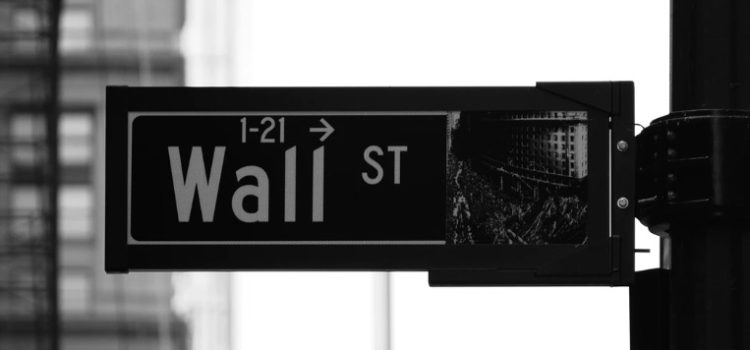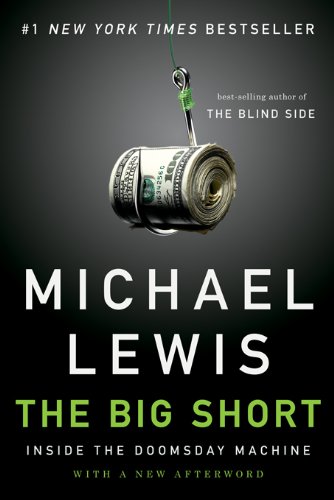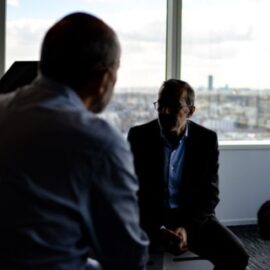

This article is an excerpt from the Shortform summary of "The Big Short" by Michael Lewis. Shortform has the world's best summaries of books you should be reading.
Like this article? Sign up for a free trial here .
What caused Morgan Stanley’s 2008 crisis, in which the bank almost collapsed? Who paid for Morgan Stanley’s bailout?
We’ll cover the events leading up to Morgan Stanley’s 2008 crisis and how its bailout cost American taxpayers bukkuibs.
Morgan Stanley and Mortgage-Backed Securities
Before we dive into Morgan Stanley’s financial crisis, we need to look at the events that led to it. The story starts with mortgage-backed securities.
Mortgage-backed securities brought the world of high finance into the lives of everyday Americans—even if they had no idea how much their homes had become chips on the table in the vast casino of global finance. A mortgage-backed security was a bundle of home mortgages (often running into the thousands) that had been packaged together into a tradable asset. When an investor purchased one, she was purchasing the cash flows from the individual home mortgages that made up the security.
This type of asset had actually existed for decades before the global financial meltdown of 2008, though few investors (and even fewer ordinary people) had heard of it. For most of the 1980s and 1990s, it was an obscure corner of the overall bond market, drawing only occasional interest from major financial institutions like Morgan Stanley, Bearn Stearns, and Goldman Sachs.
Morgan Stanley and Credit Default Swaps
Morgan Stanley got more heavily invested in the housing market when it decided to sell credit default swaps, which were new for the housing market at the time. This move would directly lead the Morgan Stanley’s 2008 financial crisis, and the financial crisis more broadly.
When investor Michael Burry wanted to short the housing market, there were no credit default swaps for subprime mortgage bonds. The banks would have to create them. Furthermore, most of the big firms that would be willing to create them might run into solvency issues and be unable to actually pay Burry the returns on his swaps if his catastrophic predictions were accurate. They were too exposed to subprime. He ruled out Bear Stearns and Lehman Brothers as potential credit default swap sellers, reasoning that they were too deep in the subprime game to be able to pay him when the bonds failed.
Morgan Stanley expressed interest. Burry hammered out a deal with them to establish a pay-as-you-go contract, ensuring payment as individual bonds failed. Burry hand-picked these bonds after having read the prospectuses, seeing that they were composed of the dodgiest, most questionable subprime loans.
Eventually, Burry set up a separate fund, called Milton’s Opus, dedicated solely to purchasing credit default swaps on mortgage-backed securities. In October 2005, he told his investors that they now owned roughly $1 billion of such assets. Some investors were outraged that Burry had tied up their money in (what seemed to them) such a risky bet. The U.S. housing market had never collapsed in the way that Burry had predicted. But Burry also knew that a full-on collapse wasn’t necessary for him to reap enormous profits. The way the swaps were structured, he would make a fortune if even a fraction of the mortgage pools went belly-up. The banks barely seemed to understand what they had sold him.
Morgan Stanley Sees Its Mistake…But It’s Too Late
But within months, the market was starting to see the wisdom of Burry’s move. Before the end of 2005, representatives from the trading desks at Goldman Sachs, Deutsche Bank, and Morgan Stanley were asking Burry to sell back the credit default swaps he’d purchased—at very generous prices. Their sudden interest in this financial instrument, which he’d helped them create mere months before, could only mean one thing—the underlying mortgages were starting to fail.
What went up on Wall Street eventually had to come down. The big banks had made a catastrophic bet, often with upper management not even knowing what its bond trading desks were up to. The story of Howie Hubler, Morgan Stanley’s famed star bond trader, illustrates how the risk from subprime became so diffused throughout Wall Street’s balance sheets.
Howie Hubler at Morgan Stanley
Hubler was Morgan Stanley’s point person in the subprime mortgage bond game, as well as the manager of side bets through credit default swaps. Through Hubler’s desk, Morgan Stanley was effectively selling worthless triple-B mortgage bonds to investors (often German land banks and pension funds), then betting on those very same bonds to fail through the swaps. Hubler’s team became a bank-within-a-bank: by April 2006, they alone were generating an estimated 20 percent of Morgan Stanley’s profits.
For the bank’s leadership, Hubler was the goose that laid the golden eggs. They didn’t understand how he did what he did, they only knew that it continued to make them rich. And they were always afraid that he’d leave to start his own fund. To keep him happy, Morgan Stanley set Hubler up with his own proprietary trading desk (on his own private floor), where he would keep a chunk of the profits he generated.
Hubler was selling mortgage-backed CDOs on the one hand, and credit default swaps against them on the other. Like our other investors, Hubler was also betting big on the housing markets to collapse. But he also had to fork over $200 million annually in premiums on the swaps until the defaults started. To solve this cash flow problem, he decided to sell some swaps on triple-A mortgage bonds, which would generate premiums to his group.
Of course, this effectively made him the owner of those bonds and he would be on the hook for the full loss when the crash came. Here, the inflated ratings on the bonds worked against him. Because the triple-A bonds he sold insurance on were rated higher (as opposed to the triple-Bs he’d bet against), the premiums they generated were lower. It cost less to insure what was seen as a safer asset. Thus, he needed to sell ten times the swaps he’d bought to even out the cash flows. The star bond trader had been fooled by the complexity of his own creation. They were all composed of the same worthless mortgages: if one pool failed, all of them were likely to fail. By mid-2007, Hubler had sold $4 billion in credit default swaps to Deutsche Bank alone, and $16 billion total.
Morgan Stanley’s 2008 Crisis
By July 2007, the housing market was in freefall and Hubler’s $4 billion sale of swaps to Deutsche Bank now translated to a $1.2 billion loss. Deutsche Bank’s Greg Lippmann himself had the pleasure of calling Morgan Stanley to let them know just how much they owed ($47 million would ultimately go to him personally). Refusing to accept that the CDOs had declined that much in value, Morgan Stanley agreed to send $600 million to Deutsche Bank, while Hubler stubbornly maintained his position in the trade.
But Hubler was, by this time, playing a losing hand. He should have folded when he had the chance. When Morgan Stanley finally admitted defeat and exited the trade, they had lost a net $9 billion, the single largest trading loss in Wall Street history. By the end of 2007, the bank lost over $37 billion through the subprime mortgage bond and related derivatives market. In an infamous conference call with shareholders, Morgan Stanley CEO John Mack revealed that he had zero understanding of what his bond department had been up to. The game had grown too complex for even the titans of Wall Street themselves to understand. Total losses on U.S. subprime-related assets would eventually top $1 trillion.
Who Paid for the Morgan Stanley Bailout?
The investors who shorted the housing market all believed that they were getting one over on the big banks. Through greed, short-sightedness, and outright stupidity, they believed that Wall Street had been given enough rope to hang itself.
But, in the end, this wasn’t really true. Yes, investors Eisman, Burry, Lippmann, Ledley, Mai, and Hockett were vindicated and got paid. But the final payer wasn’t Goldman Sachs or Deutsche Bank or AIG or Morgan Stanley. It was the U.S. taxpayer. When the final meltdown occurred in September 2008, Congress passed the Troubled Asset Relief Program (TARP), the (in)famous $700 billion bailout of the financial sector. The gains, it turned out, were privatized—the losses were socialized. Wall Street was pro-free market, until they were in trouble. As John Gutfreund, former CEO of Salomon Brothers remarked, “It’s laissez-faire until you get in deep shit.”
The U.S. government decided that it could not allow all of Wall Street to go under: the toxic subprime assets were spread too far, too wide, and too ambiguously. If one firm needed a bailout, they all needed a bailout.
Were there people at Morgan Stanley who knew that the bank was too big to fail and that it would receive a bailout no matter what kind of irresponsible risks it took? And did this knowledge bring on the excessive risk-taking? Many questions about Morgan Stanley’s 2008 financial crisis are still unanswered.
———End of Preview———

Like what you just read? Read the rest of the world's best summary of "The Big Short" at Shortform . Learn the book's critical concepts in 20 minutes or less .
Here's what you'll find in our full The Big Short summary :
- How the world's biggest banks contributed to the 2008 financial crisis, greedily and stupidly
- How a group of contrarian traders foresaw the bubble popping, and made millions from their bets
- What we learned from the 2008 crisis - if anything







Amanda, what advice would you have for me regarding my current stock portfolio being held by a company that Morgan Stanley is in the process of acquiring?
I appreciate your opinion!
Thank you!